Royal Academy of Arts Magazine, London
Article
2025
émergent, London
Interview
2025
C-Mine, Genk
Exhibition Text
2025
Hannah Barry Gallery x Foolscap Editions, London
Editor
2025
Lo Brutto Stahl, Paris & Basel
Exhibition Text
2024
Hannah Barry Gallery x Foolscap Editions, London
Editor
2024
émergent, London
Interview
2024
DUVE, Berlin
Exhibition Text
2024
émergent, London
Interview
2024
Incubator, London
Exhibition Text
2023
QUEERCIRCLE, London
Exhibition Text
2023
L.U.P.O., Milan
Catalogue Essay
2023
Tarmac Press, Herne Bay
Catalogue Essay
2023
Brooke Bennington, London
Exhibition Text
2023
Freelands Foundation, London
Catalogue Essay
2023
superzoom, Paris
Exhibition Text
2023
Lichen Books, London
Catalogue Essay
2022
Tennis Elbow, New York
Exhibition Text
2022
émergent, London
Interview
2022
Guts Gallery, London
Exhibition Text
2021
Kupfer Projects, London
Exhibition Text
2021
Collective Ending, London
Catalogue Essay
2021
L21 Gallery S’Escorxador, Palma De Mallorca
Exhibition Text
2021
TJ Boulting, London
Exhibition Text
2021
COEVAL, Berlin
Interview
2021
Quench Gallery, Margate
Exhibition Text
2021
COEVAL, Berlin
Interview
2021
COEVAL, Berlin
Interview
2021
Foolscap Editions, London
Catalogue Essay
2020
Gentrified Underground, Zurich
Catalogue Essay
2020
‘Inside "Neptune’s Lair": Drexciya, Dystopia and Afrofuturism’ in Bubble Chamber (Gentrified Underground, Zurich, 2020).
Bubble Chamber was published on the occasion of an exhibition of the same name split across two galleries, Mikro & UP STATE, in Zurich (16 November - 23 December 2019). The exhibition presented an interdisciplinary project focusing on the afrofuturist legacy of Drexciya, including paintings, album covers and illustrative drafts by Abdul Qadim Haqq alongside informative research on Drexciya, a screening of The Otolith Group’s Hydra Decapita, and live performance from Gerald Donald (formlery Drexciya, now Dopplereffekt). A 2x12 vinyl compilation and publication was released for exhibition, with contributions from Charlie Mills, Abdul Qadim Haqq, chukwumaa, Dominique White, Gentrified Underground and Maïté Chéniere, and tracks by Xor Gate (Gerald Donald), Shawescape Renegade, DJ Dijital, Plant43, The Exaltics, Kuldaboli, Iko, Tom Ware, Luz1e and Sansibar.
–
'Inside "Neptune’s Lair": Drexciya, Dystopia and Afrofuturism’
— Extract —
'Could it be possible for humans to breathe underwater?'[1] – so begin the sleeve notes to Drexciya’s inaugural 1997 album The Quest. Emerging in the early 90s alongside figures such as Octave One and Underground Resistance, Drexciya was a second-wave electro duo based in the post-industrial homeland of Detroit techno. Drawing from the history of the Trans-Atlantic slave trade, Drexciya augmented their visionary sound of electro-techno with a retrofuturist mythology of sunken wormholes, webbed mutants and abyssal planes. The music itself was appropriately fluid. Bass that lurched up-pitch like magma through the ocean floor, damp hi-hats and ambient fogs of austere oceanic depth. During their active years Drexciya released a total of three Studio Albums, nine EPs and three Singles. Since their untimely dissolution following the death of its cofounder James Stinson in 2002, Dutch record label Clone Records has released four Compilation Albums charting their full sonic journey, from the nautical jungle of Drexciya to the ‘Red Hills of Lardossa’ on Mars; even the ‘grava theory’ of their final album release, Grava 4 (2002): a 'single, continuous super-field that contains and mediates all energy, mass, space and time.'[2] Following from our inaugural quote, the short textual preface found in The Quest’s sleeve notes continues on to solidify the former and most essential of these speculative visions: the Drexciyan mythology of an underwater cosmos – one which had been slowly building since their first 12” EP release on UR’s label Submerge Records in 1992, Deep Sea Dweller:
'Are Drexciyans water breathing, aquatically mutated descendants of those unfortunate victims of human greed? Have they been spared by God to teach us or terrorise us? Did they migrate from the Gulf of Mexico to the Mississippi river basin and on to the great lakes of Michigan? Do they walk among us? Are they more advanced than us and why do they make their strange music? What is their Quest?'[3]
Through an assemblage of album and track titles, cover art and sleeve notes, Drexciya is portrayed as an underwater realm deep within the Atlantic Ocean, inhabited by the unborn children of pregnant African women hurled overboard slave ships during 'the greatest holocaust the world has ever known.'[4] Populated by a sub-aquatic archipelago of cartographic track listings – ‘Danger Bay’, ‘Positron Island’, ‘Bubble Metropolis’ and so on – the subterranean universe provides a fictional setting for the establishment of a new maritime species: the Drexciyans, a race of amphibian ‘wave jumpers’ strategically poised to invade the shores of American soil in packs of 'stingray and barracuda battalions.'[5] Sporadically teaming with agents of Underground Resistance for covert black ops in the 'ongoing war against planetary Control,'[6] the eponymous frogmen – armed with tridents, webbed feet and diving masks – are militarised posthuman cyborgs, launching a sub-terrestrial attack on the collapsing beaches of Western modernity. Equally home to the likes of Mutant Gillmen, Lardossans and Darthouven Fish Men, the shadowy waters of Drexciya are a melting pot of synthetic diasporic victims. Forced into a pelagic adaptation of digital technologies and guerrilla warfare, the mutant protagonists of Drexciya’s aqua-theatre are stand-ins for the anonymity of Drexciya’s real, human faces; twin characters engaged in a perpetual state of what Kodwo Eshun refers to as 'open secrecy.'[7]
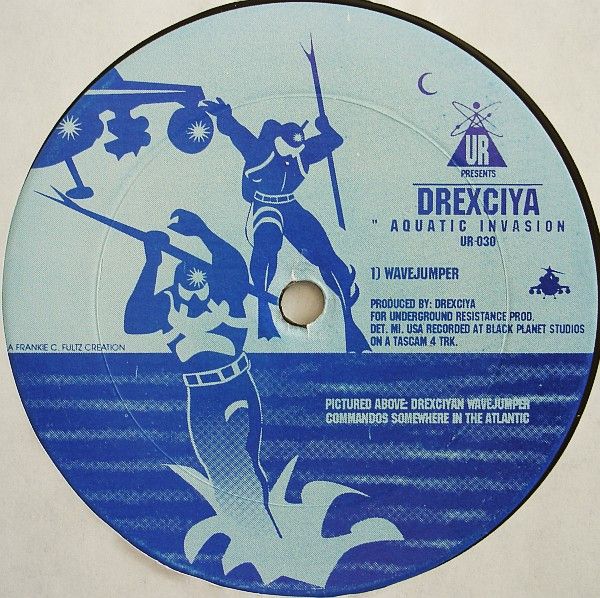
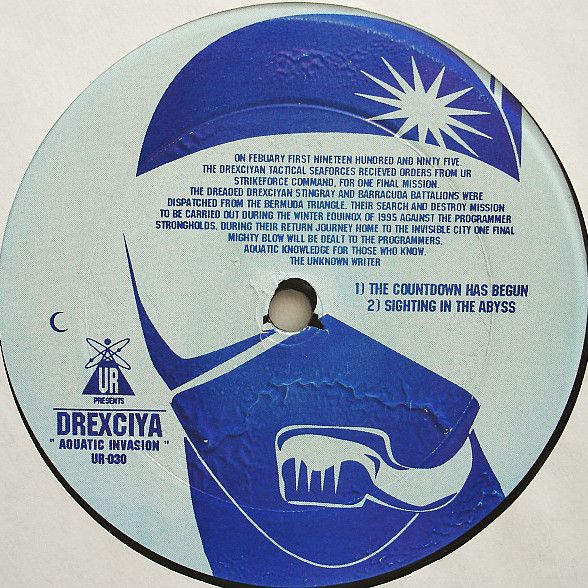
Drexciya, Aquatic Invasion (Underground Resistance, 1995)
The productions of Drexciya, whilst widely popular and still influential, were never known through their human counterparts. Stinson and cofounder Gerald Donald (now lead member of electro outfit Dopplereffekt) were radically withdrawn from any vehicle of standard media representation. Indignant to interviews during their active years, with those given reading more like cryptic transmissions sent from submerged laboratories or cosmic Beta waves, and with no photographs or live performances, Drexciya obscured any humanistic reading of their music. Any means of concretising, or as Deleuze & Guattari would say, ‘facialising’ the duo was systematically rejected, or at best made into another function of the mytho-poetic machine: 'If the face is a politics, dismantling the face is also a politics involving real becomings, an entire becoming-clandestine.'[8] This obfuscation was a sentiment shared by figures in the 90s, such as Underground Resistance and Berlin’s Basic Channel label, with contemporary stars such as DJ Stingray (his name a clear reference of his indebtedness to the work of Drexciya) still wearing his signature balaclava. As Eshun goes on to establish, the function of their practice was not simply music but a sonic fiction. Curtailing usual modes of narrativisation common in cultural criticism, this 'can be understood as the convergence of the organisation of sound with a fictional system whose fragments gesture towards but fall short of the satisfaction of narrative.'[9] Thus from an early stage we can see how the apparatus of Drexciya’s Afrofuturist myth is fundamentally concerned with an open-ended means of analysis; the closure of monolithic narratives and essentialist forms is integral to the mode of Drexciyan identity established through the means of its sonic fiction. Furthermore:
'By the 1980s the emergent digital technology of sequencers, samplers, synthesisers, and software applications began to scramble the ability to assign identity and thereby racialize music. [And if] racial identification became intermittent and obscure to the listener, for the musician, a dimension of heteronomy became available.'[10]
This is to say, in the words of the late Mark Fisher, that the rise of Detroit techno 'was best enjoyed as an anonymous electro-libidinal current that seemed to pass through producers, as a series of affects and FX that were de-linked from authors.'11 This anonymity allowed musicians to create sonic fictions where there was no ‘true’ narrative to uncover – no essential ‘being’ behind their subjective enunciations.
[1] Sleeve Notes to The Quest (Submerge Recordings, 1997).
[2] Nettrice Gaskins, ‘Deep Sea Dwellers: Drexciya and the Sonic Third Space,’ in Shima, No. 10, Vol.2 (2016) pp. 78.
[3] Notes to The Quest.
[4] Ibid.
[5] Sleeves Notes to Aquatic Invasion (Underground Resistance, 1995).
[6] Kodwo Eshun, ‘Drexciya as Spectre,’ in Matter Fictions, ed. M. Mendes (New York: Sternberg Press,2016) pp. 38.
[7] Ibid., 36.
[8] Gilles Deleuze and Félix Guattari, A Thousand Plateaus: Capitalism and Schizophrenia (Minneapolis: University of Minnesota Press, 1987) pp. 188.
[9] Matter Fictions, 33.
[10] Kodwo Eshun, Future Considerations on Afro-Futurism,’ in The New Centennial Review, Vol. 3, No.2 (2003) pp. 296.
[11] Mark Fisher, Ghosts of My Life: Writings on Depression, Hauntology and Lost Futures (Winchester: Zero Books, 2014) pp. 32.
First Release of 500
56-page Booklet
Produced by Nicola Kazimir
Mastered At – Analogcut Mastering
Distributed By – Wordandsound
Published by Gentrified Underground
Printed and pressed in Zürich, 2020
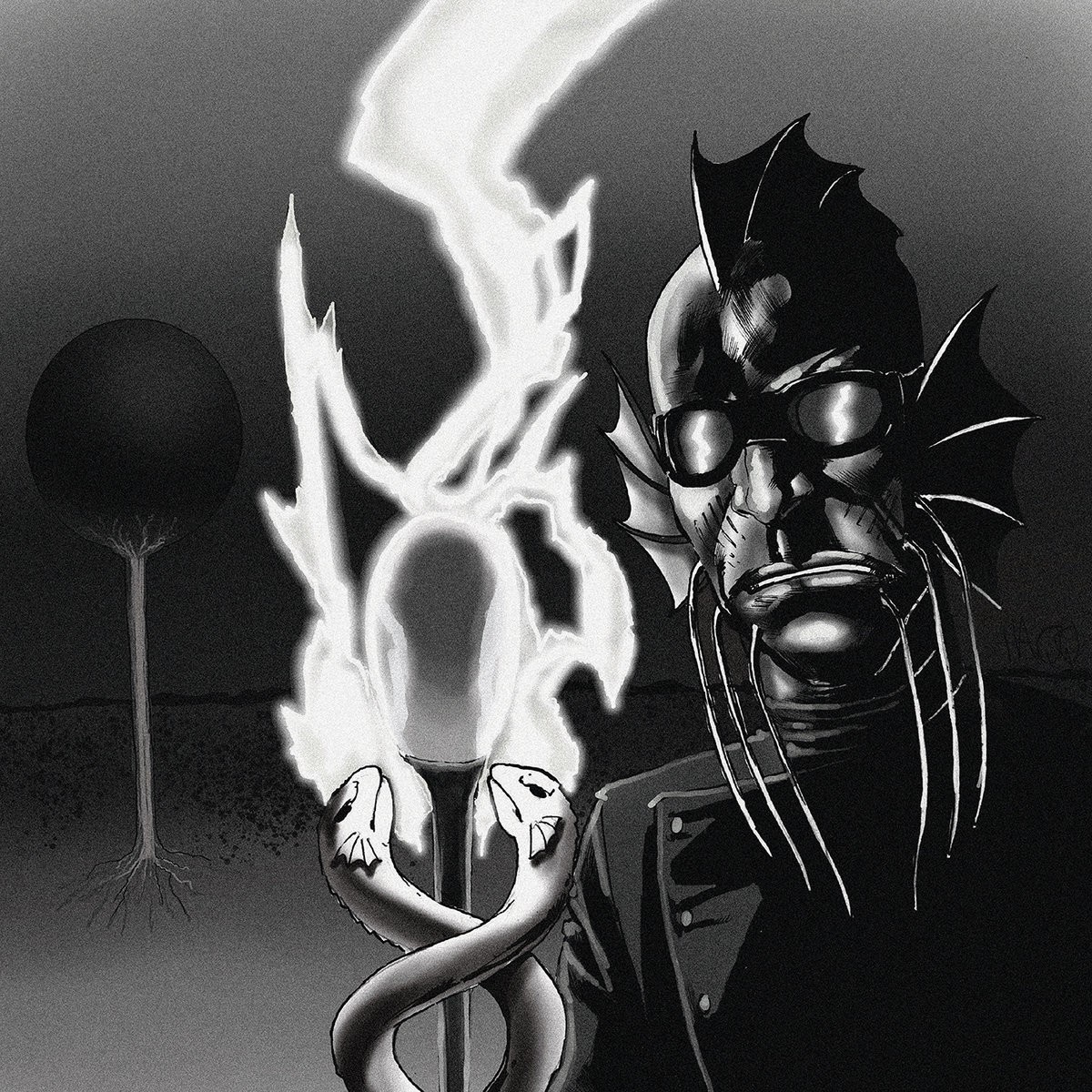
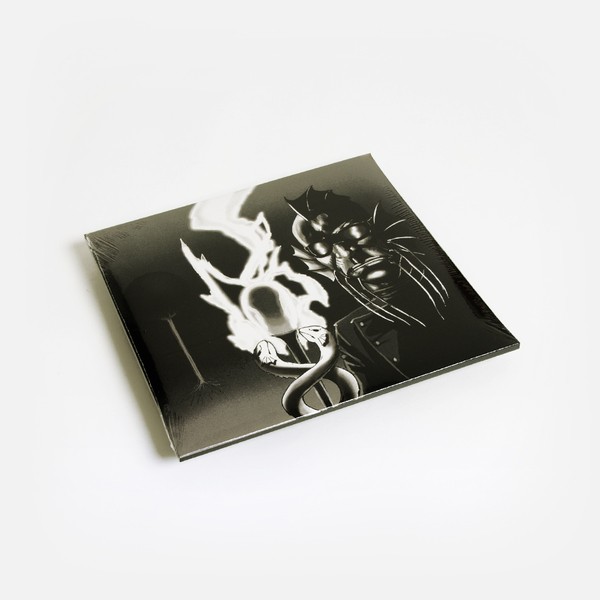
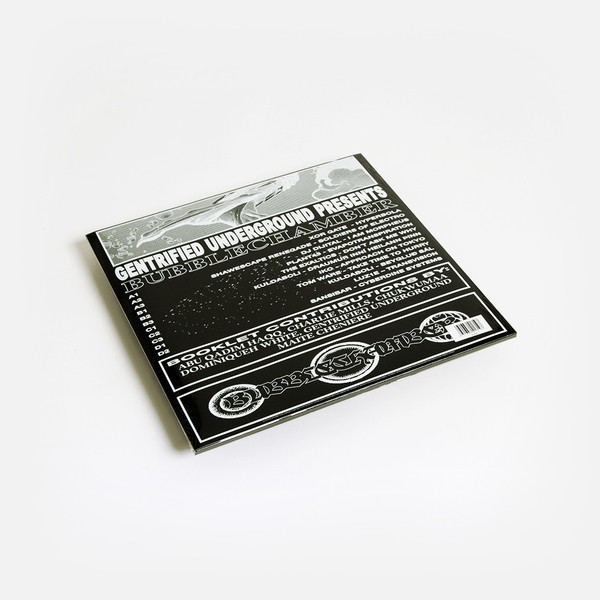
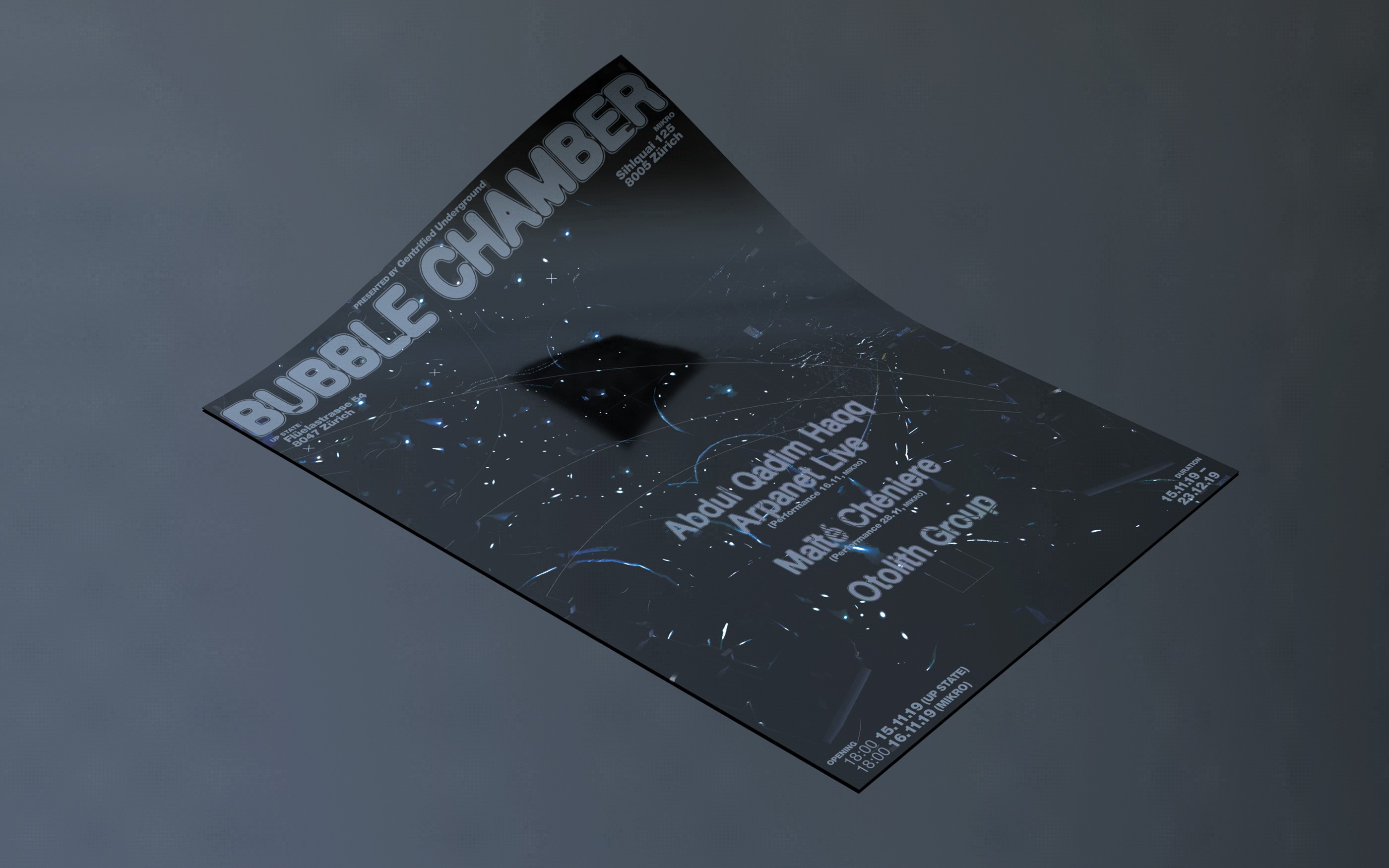
Camberwell College of Arts, London
Exhibition Text
2019
Kronos Publishing, London
Editor
2019
Elam Publishing, London
Editor
2019
William Bennington Gallery, London
Catalogue Essay
2019
Elam Publishing, London
Catalogue Essay
2018
Camberwell College of Arts, London
Exhibition Text
2018
Limbo Limbo, London
Exhibition Text
2017
Saatchi Art & Music Magazine, London
Review
2017
B.A.E.S., London
Exhibition Text
2016